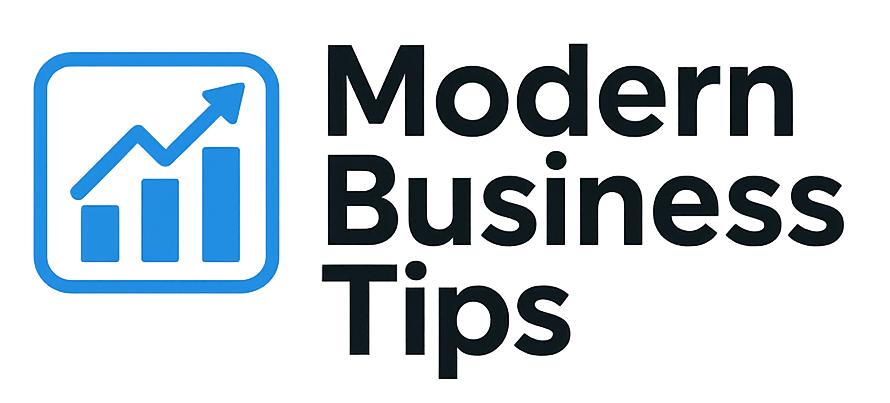Starting an online retail business is a great time. Ecommerce sales are expected to rise a lot in the future. This is a chance for new entrepreneurs to shine. I’ll share important steps to start an ecommerce company.
We’ll look at different business models, market research, and making a solid plan. Choosing the right products is also key. Plus, using digital platforms for your business is vital.
Success stories like Anker Technologies show even small starts can grow big in ecommerce.
Key Takeaways
- Identify the right ecommerce business model that aligns with your goals.
- Conduct thorough market research to understand your audience and competitors.
- Create a detailed business plan to guide your operations.
- Select products that meet current demand and trends.
- Choose an ecommerce platform that fits your needs.
- Develop a strong marketing strategy using digital tools.
Understanding Ecommerce Business Models
It’s key to know the different ecommerce business models when starting an online store. Each model has its own strategies for reaching customers and meeting market needs. I’ll look at main models like B2C, B2B, C2C, and C2B. Choosing the right one is vital for matching my products with the right audience.
Types of Ecommerce Models Explained
Ecommerce offers many business models for different entrepreneurs. Let’s quickly go over four main ones:
| Model | Description | Examples |
|---|---|---|
| B2C | Businesses sell directly to consumers. | Amazon, Walmart |
| B2B | Businesses sell to other businesses. | Alibaba, ThomasNet |
| C2C | Consumers sell to other consumers, usually through a marketplace. | eBay, Craigslist |
| C2B | Consumers sell products or services to businesses. | Freelancer platforms like Upwork |
Choosing the Right Model for You
Choosing the right ecommerce model means looking at who I want to sell to and how they buy. For example, if I’m selling to individuals, B2C might be best. But if I’m selling to businesses, B2B is better. Thinking about how I’ll deliver products, like dropshipping, also helps decide.
By picking the right model and adjusting it to my products and market, I can make my ecommerce business a success.
Conducting Market Research
Market research is key in the ecommerce world. It helps understand who might buy your products and who you’re up against. This way, you can see the big picture before you start.
Identifying Your Target Audience
Finding out who your customers are is vital. You can use a few methods to do this:
- Demographic Analysis: Look at age, gender, where they live, and how much they make. This gives you a clear view of your customers.
- Psychographic Profiling: Learn about their interests, values, and lifestyle. This helps you pick the right products and messages.
- Surveys and Feedback: Ask people directly what they think. This helps you check your ideas and make changes if needed.
Analyzing Competitors
Looking at what your competitors do can help you improve. Here are some important things to check:
- Product Features: See what your competitors offer. This helps you decide what to include in your products.
- Pricing Strategies: Find out how your competitors price their products. This helps you set your prices right.
- Customer Reviews: Look at what people say about your competitors’ products. This tells you what customers like and dislike.
By combining insights from your target audience and competitors, you can create a strong business plan. This plan meets market needs and fills any gaps in the industry.
Creating a Business Plan
Creating a business plan is key when starting an ecommerce business. It’s like a roadmap that shows how I plan to grow my brand and make money. It outlines my goals, how I’ll compete, and when I’ll do things.
Essential Components of a Business Plan
When making my business plan, I focus on a few important parts. These are:
- Executive Summary: A brief summary of my business idea and what it offers.
- Market Analysis: Deep insights into who my customers are and who my competitors are.
- Marketing Strategy: A plan for how I’ll promote my products and find customers.
- Operational Plan: A detailed plan of how I’ll run my business, including suppliers and logistics.
- Financial Projections: Predictions of my income, expenses, and profits.
Setting Realistic Goals and Objectives
Setting achievable goals is vital for success. My goals are specific and measurable, like:
- Getting X customers in the first six months.
- Reaching a monthly sales goal of $Y by the end of the first year.
- Boosting social media presence by Z% in growth.
This method helps me stay on track and adjust as needed. By regularly checking my goals, I can make changes to stay competitive.
Selecting Your Products
Choosing the right products is key to success in ecommerce. There are different ways to find products that fit my business. By picking the right products, I can meet customer needs and make more money.
Sourcing Products: Options and Strategies
There are many ways to find products for ecommerce. Here are a few:
- Dropshipping: This lets me sell products without keeping them in stock. Suppliers ship them directly to my customers.
- Wholesaling: Buying in bulk lowers costs, which means I can make more money.
- Manufacturing: Making my own products sets me apart and attracts certain customers.
Each method has its own benefits. I need to think about my resources, who I want to sell to, and the market.
Evaluating Product Demand and Trends
Checking product demand is important for my business. Watching market trends helps me understand what customers want. Here are some ways to do this:
- Using tools to see what products are popular and in demand.
- Watching social media for new trends and what people are saying.
- Doing surveys or polls to hear from possible customers.
These methods give me the info I need to pick products that will sell well and make money.
| Method | Pros | Cons |
|---|---|---|
| Dropshipping | Low initial investment, no inventory management | Lower profit margins, reliance on supplier |
| Wholesaling | Cost-effective, bulk purchasing | Requires upfront capital, warehouse space needed |
| Manufacturing | Unique product offerings, greater control | High startup costs, complex logistics |
By knowing these options and using smart strategies for picking products, my ecommerce business can do well in a tough market.
Choosing an Ecommerce Platform
Choosing the right ecommerce platform is key to setting up my online store well. There are many online store platforms out there. I need to pick one that fits my business’s needs. Looking at Shopify, WooCommerce, and Squarespace helps me decide.
Each platform has its own strengths. They can affect how well I run my business and how happy my customers are.
Popular Platforms for Beginners
For beginners, some platforms are easier to use:
- Shopify: Known for being simple and having lots of apps.
- WooCommerce: Great for WordPress users, it’s flexible and grows with you.
- Squarespace: Perfect for creatives, it has beautiful designs.
Comparing Features and Pricing
When looking at ecommerce platforms, it’s important to compare features and prices. This ensures I find one that’s affordable and meets my needs. Here’s a table showing key features and costs.
| Platform | Starting Price | Customization Options | Payment Processing |
|---|---|---|---|
| Shopify | $29/month | High | Built-in payment processing |
| WooCommerce | Free (Hosting required) | Very High | PayPal, Stripe, and more |
| Squarespace | $18/month | Moderate | Built-in payment options |
By looking at these points, I can pick a platform that meets my needs now and grows with me. The right choice will help me improve my online store and make sales easier.
Designing Your Online Store
When I think about designing an online store, the user experience is key. A good, user-friendly design lets customers easily find and buy what they need. As online shopping grows, the right design can boost sales and make customers happy.
Importance of User-Friendly Design
A smooth shopping experience is essential. Easy navigation helps customers find their way. Fast page loads and mobile-friendly sites are also important, as many shop on phones.
A well-designed site keeps visitors interested. This reduces the chance of them leaving early and makes them more likely to interact with the site.
Best Practices for Product Presentation
How I show products is important for convincing buyers. Good product presentation makes things look better and builds trust. High-quality images are a must, showing off the product’s details.
Clear descriptions add context and highlight what makes the product special. Calls to action encourage customers to buy, helping them make up their minds.
To learn more about making your ecommerce site better, check out different ways to design your online store.
Setting Up Payment Processing
Effective ecommerce payment processing is key to a smooth shopping experience. I have many payment options to choose from, meeting the needs of my customers. It’s important to use secure payment gateways to build trust with my customers.
Available Payment Methods and Gateways
When setting up payment methods, it’s smart to offer several choices. Some popular options include:
- Credit and debit cards
- PayPal
- Digital wallets like Apple Pay and Google Pay
- Bank transfers
- Cryptocurrency options
Choosing reliable payment gateways is critical for quick transactions. Options like Stripe, Square, and Authorize.net are well-known. It’s important to pick the best one for my business.
Security Considerations for Transactions
Security is a top priority in ecommerce payment processing. Ensuring PCI compliance is essential to protect customer data. I also need to use encryption to keep information safe during transactions.
Knowing about transaction fees and policies helps me make smart choices. By focusing on security and providing various payment options, I can succeed in the competitive ecommerce world.
| Payment Method | Pros | Cons |
|---|---|---|
| Credit/Debit Cards | Widespread acceptance, quick transactions | High chargeback risks |
| PayPal | User-friendly, buyer protection | Fee structure can be complex |
| Digital Wallets | Convenient, popular among mobile users | Limited availability for older customers |
| Bank Transfers | Direct, secure method | Slower processing times |
| Crypotocurrency | Low transaction fees | Volatility and acceptance issues |
Developing a Marketing Strategy
A strong marketing strategy is key to growing an ecommerce business. I focus on digital marketing essentials to engage customers and boost sales. Using different channels helps reach and convert more buyers.
Digital Marketing Essentials for Ecommerce
Digital marketing for ecommerce involves a mix of strategies. Email marketing, SEO, and PPC ads are essential. For example, email campaigns keep leads engaged and encourage more purchases.
Understanding analytics helps me improve my strategy. I track metrics like click-through and conversion rates. This lets me adjust my approach for better results.
Leveraging Social Media and SEO
Social media is vital for ecommerce success. Platforms like Instagram and Facebook help showcase products and connect with customers. Working with influencers expands my reach.
Strong SEO also boosts my store’s visibility. I optimize descriptions, use keywords, and create engaging content. This combination drives more traffic and sales.
By staying updated and adapting, my marketing strategy stays effective. It evolves with the market’s needs.
Managing Logistics and Fulfillment
Effective logistics and fulfillment in ecommerce are key to happy customers and smooth operations. I’ve found that making shipping faster and cheaper can really help. It’s also smart to offer different shipping choices to meet customer needs.
Shipping Options and Best Practices
When I look at shipping options, I think about what my customers want. Here are some shipping tips that work well:
- Offer flat rate shipping to make things easier for customers.
- Use free shipping thresholds to make my store more attractive.
- Think about shipping to other countries to reach more people, choosing reliable partners.
By using these tips, I can make sure my shipping is fast and reliable. This builds trust with my customers.
Inventory Management Tips
Good inventory management is essential for smooth operations. I use real-time tracking to stay on top of stock levels. This helps me:
- Keep track of stock accurately to avoid running out.
- Work well with suppliers for a steady supply of products.
- Adjust to changes in demand to avoid too much stock.
By focusing on these strategies, I keep my logistics and fulfillment in line with what customers expect. And I save money too.
Analyzing and Optimizing Your Business
In the fast-changing world of ecommerce, tracking performance is key. I look at metrics like conversion rates and average order value. These insights help me make choices that grow my business.
Using advanced analytics tools, I dig deeper into the data. This helps me spot trends and patterns. It’s vital for making smart decisions and using resources wisely.
Improving my strategies based on data is essential. It helps me stay ahead in the competitive ecommerce market. Making decisions based on data boosts performance and sets my business up for success. For more tips, check out the guide at optimizing your ecommerce business.



